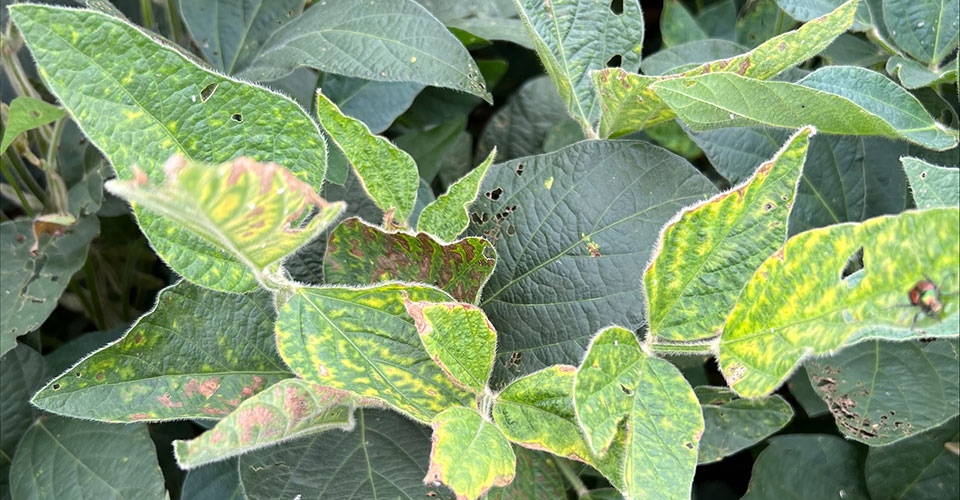Manhattan, Kansas, USA
June 28, 2024

K-State researchers have found that adding phosphorus to fertilizer decreased foliar disease in soybeans due to Sudden Death Syndrome, or SDS.
K-State researchers are continuing to build a defense against one of the most debilitating fungal diseases affecting soybean production, recently reporting a breakthrough on the value of increasing phosphorus levels for managing Sudden Death Syndrome.
Kansas State University researchers are continuing to build a defense against one of the most debilitating fungal diseases affecting soybean production, recently reporting a breakthrough on the value of increasing phosphorus levels for managing disease.
K-State plant pathologist Rodrigo Onofre and agronomist Eric Adee have spent several years studying the impact of adding varying rates of phosphorus, nitrogen and potassium to fertilizer in order to combat Sudden Death Syndrome, a soil-borne, fungal pathogen that invades the roots and lower stem of the soybean plant.
SDS was first identified in the U.S. in 1971 in Arkansas, but has since spread to several states in the central part of the country. It was first observed in Kansas in 1993, and a report from the United Soybean Board indicates SDS causes millions of dollars of economic loss annually in Kansas.
The Kansas Soybean Commission reports that soybeans are grown by more than 12,000 Kansas farmers.
Onofre said the K-State research was conducted “to bring more tools to producer’s toolbox” in combatting SDS. He notes that soybean producers should still seek varieties that are resistant to SDS, and consider seed treatments. K-State’s work provides another line of defense.
“One of our major findings was that the more phosphorus we added (to fertilizer), the less SDS foliar disease we saw in the soybean field,” Onofre said.
Nitrogen and potassium did not create a measurable defense against SDS, according to the K-State study. A combination of nitrogen and phosphorus did, however, seem to increase the crop’s yield, Onofre said.
K-State’s study focused on applying fertilizer to fields under a corn-soybean rotation. The fertilizer was applied prior to planting corn, according to Onofre. Researchers added phosphorus to fertilizer at three rates – zero, 30 and 60 pounds per acre.
“Sixty pounds per acre was the rate that most reduced disease,” Onofre said.
Updated information and recommendations on protecting soybeans from many common diseases is available online from the Crop Protection Network, a partnership of land-grant universities across the U.S.
Kansas farmers are also encouraged to visit their local extension office for guidance on crop production in the state.